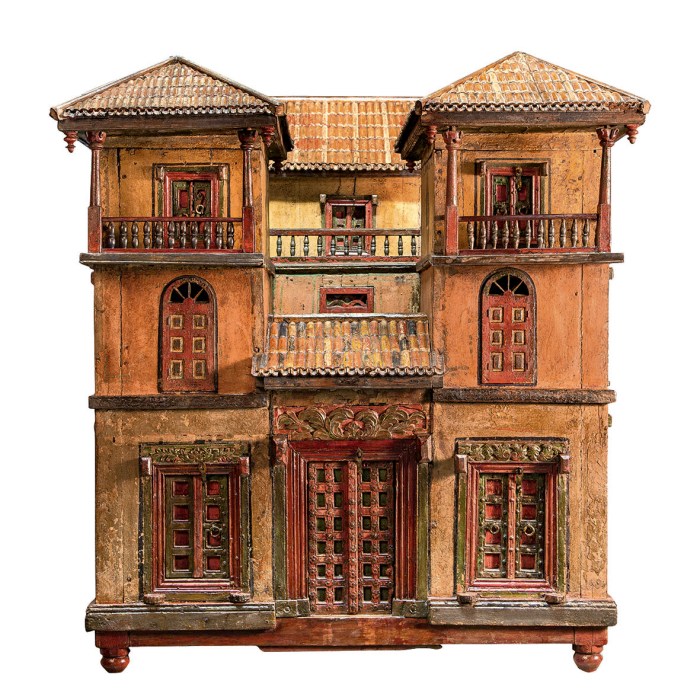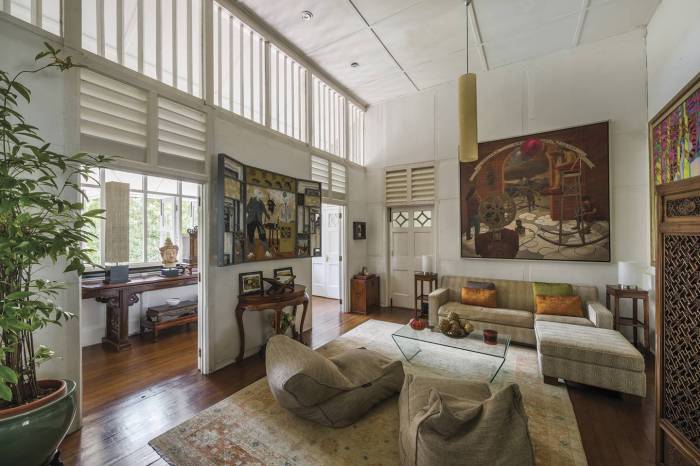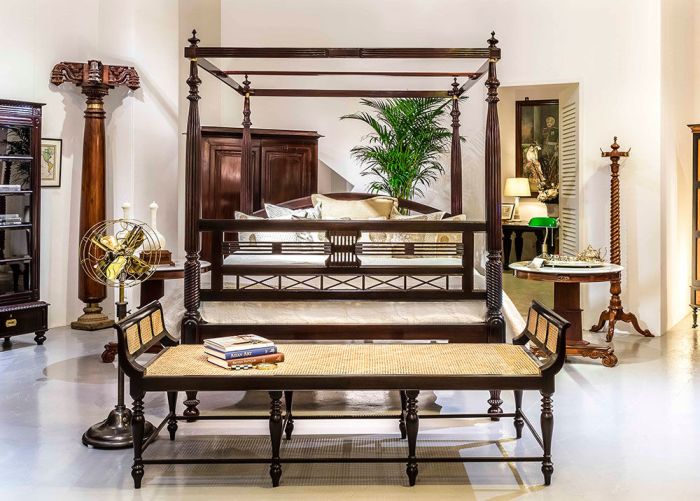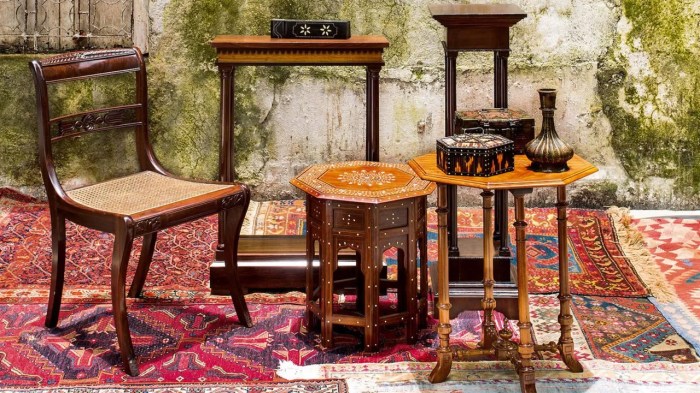Colonial furniture plans offer a window into the past, allowing you to recreate the elegant and functional pieces that graced homes centuries ago. From sturdy tables and chairs to intricate chests and desks, these plans provide detailed instructions for crafting furniture that reflects the craftsmanship and style of a bygone era. Whether you’re a seasoned woodworker or a curious beginner, exploring colonial furniture plans can be a rewarding journey, allowing you to bring history to life in your own home.
These plans delve into the rich history of colonial furniture, exploring its European influences, indigenous inspirations, and evolution over time. You’ll discover the distinctive characteristics of different regional styles, from the simple elegance of New England furniture to the more ornate designs of the South. The plans also guide you through the selection of materials, traditional woodworking techniques, and the use of tools that were common during the colonial period.
Historical Context of Colonial Furniture

Colonial furniture, a reflection of the era’s cultural and economic landscape, was a fusion of European styles and indigenous craftsmanship. It evolved over time, showcasing the changing tastes and needs of the colonists.
European Influences on Colonial Furniture Design
European styles played a significant role in shaping colonial furniture design. Colonists brought with them their traditions and preferences for furniture, which they adapted to the new environment and resources available. The dominant European styles that influenced colonial furniture were:
- English: English furniture styles, particularly those of the late 17th and early 18th centuries, were highly influential. This included the William and Mary, Queen Anne, and Georgian periods. The emphasis on practicality and functionality was evident in the sturdy construction and simple designs of colonial furniture.
- Dutch: The Dutch, who established settlements in New Netherland (present-day New York), brought with them their own furniture traditions. Dutch furniture was often characterized by its simple, utilitarian designs and its use of dark woods like walnut and oak.
- French: French influence was evident in the furniture of the French colonies in North America, particularly in the areas that are now Louisiana and parts of Canada. French furniture was often more ornate and decorative than its English and Dutch counterparts, incorporating elements of rococo and Louis XIV styles.
Indigenous Craftsmanship and Materials
Colonial furniture also reflected the influence of indigenous craftsmanship and materials. Colonists learned from Native Americans how to work with local woods and how to create furniture that was both durable and functional. Examples of indigenous influences include:
- Woodworking Techniques: Native Americans taught colonists how to use tools and techniques for woodworking, including the use of hand-hewn timbers and dovetail joints.
- Materials: Colonists used local woods, such as maple, pine, and walnut, for furniture construction. They also incorporated materials like rush and cane for seating and backrests.
- Design Motifs: Indigenous designs and motifs were sometimes incorporated into colonial furniture, such as the use of carved animal figures or geometric patterns.
Evolution of Colonial Furniture Styles
Colonial furniture evolved over time, reflecting the changing tastes and economic conditions of the colonies. Key periods and their defining characteristics include:
- Early Colonial Period (1600s-1700s): Furniture during this period was characterized by its simplicity and practicality. The focus was on functionality, and furniture was often made from local woods and using basic joinery techniques. Common pieces included chests, tables, and chairs.
- William and Mary Period (1690s-1720s): The influence of English William and Mary style is evident in furniture from this period. This style featured more elaborate designs, including the use of turned legs, carved details, and upholstered seats.
- Queen Anne Period (1720s-1750s): Queen Anne furniture was known for its elegant curves and graceful proportions. This style was popular throughout the colonies and featured pieces like highboys, dressing tables, and chairs with cabriole legs.
- Georgian Period (1750s-1780s): The Georgian period saw a shift towards more elaborate and formal furniture designs. This style was heavily influenced by English Georgian furniture, and it featured pieces with intricate carvings, gilded surfaces, and symmetrical designs.
Regional Variations in Colonial Furniture
Colonial furniture styles varied across different regions of the colonies, reflecting the unique cultural and economic conditions of each area. Some of the notable regional variations include:
- New England: Furniture from New England was often characterized by its simplicity and practicality. This was influenced by the Puritan values of the region, which emphasized simplicity and austerity. New England furniture was known for its use of local woods, such as maple and pine, and its sturdy construction.
- Mid-Atlantic: The Mid-Atlantic colonies, which included Pennsylvania, New Jersey, and Delaware, had a more diverse furniture style that reflected the influence of various European cultures. This region was home to a mix of English, Dutch, and German settlers, and their furniture styles often combined elements of these traditions.
- Southern Colonies: Southern colonial furniture was often more ornate and elaborate than its New England counterparts. This reflected the wealth and plantation culture of the South. Southern furniture was known for its use of mahogany and other exotic woods, and its intricate carvings and upholstery.
Types of Colonial Furniture

Colonial furniture encompasses a diverse range of pieces that reflect the evolving styles and needs of American society from the 17th to the 19th centuries. These pieces were crafted with meticulous attention to detail and functionality, often incorporating traditional European designs while adapting them to the unique circumstances of the New World.
Colonial Furniture Types, Colonial furniture plans
Colonial furniture is categorized into distinct types, each serving specific functions within the home. Understanding these types provides valuable insight into the lives and priorities of early Americans.
- Chairs: Chairs were essential for seating, and their styles evolved throughout the colonial period. Early chairs, such as the “joint stool,” were simple and sturdy. Later styles included the Windsor chair, known for its distinctive curved back and turned legs, and the Chippendale chair, characterized by its elegant, intricate carvings.
- Tables: Tables served a variety of purposes, from dining to writing and display. The “trestle table,” a simple design with two long beams supported by trestles, was common in early colonial homes. As the colonial period progressed, more elaborate styles emerged, such as the “drop-leaf table” and the “gateleg table,” which could be extended for larger gatherings.
- Beds: Beds were typically four-poster frames with a canopy, providing privacy and warmth. Early beds were often made of simple materials like wood and rope, but later styles incorporated more luxurious fabrics and ornamentation. Beds were also a significant status symbol, reflecting the wealth and social standing of the owner.
- Chests: Chests were essential for storage, serving as wardrobes, trunks, and even seating. They were often decorated with intricate carvings or painted designs, showcasing the craftsmanship of the time. Chests were also used as dowry items, reflecting the bride’s family’s wealth and status.
- Desks: Desks, though less common in early colonial homes, became more prevalent as literacy and commerce increased. They were used for writing, accounting, and other administrative tasks. Colonial desks often featured drawers, pigeonholes, and other compartments for organizing documents and supplies.
Colonial Furniture Period Classification
The historical period significantly influences the design and construction of colonial furniture. Here’s a table that categorizes furniture types by period, materials, design elements, and notable variations:
| Furniture Type | Historical Period | Common Materials | Typical Design Elements | Notable Variations |
|---|---|---|---|---|
| Joint Stool | 17th Century | Oak, Pine | Simple, sturdy construction; plain, unornamented seat and legs | – |
| Trestle Table | 17th Century | Oak, Pine | Two long beams supported by trestles; often used for dining and work | – |
| Four-Poster Bed | 17th Century | Oak, Pine | Four posts supporting a canopy; often decorated with simple carvings | – |
| Chest | 17th Century | Oak, Pine | Sturdy construction; often decorated with simple carvings or painted designs | – |
| Windsor Chair | 18th Century | Walnut, Maple | Distinctive curved back and turned legs; often painted or stained | – |
| Chippendale Chair | 18th Century | Mahogany, Walnut | Elegant, intricate carvings; often upholstered with fine fabrics | – |
| Drop-Leaf Table | 18th Century | Mahogany, Walnut | Leaves that fold down to create a smaller table; often used for dining and writing | – |
| Gateleg Table | 18th Century | Mahogany, Walnut | Folding legs that allow the table to be extended; often used for dining and work | – |
| Secretary Desk | 18th Century | Mahogany, Walnut | Writing surface that folds down to reveal storage compartments; often used for writing and accounting | – |
| Sleigh Bed | 19th Century | Mahogany, Walnut | Curved headboard and footboard that resemble a sleigh; often upholstered with fine fabrics | – |
Materials and Techniques

Colonial furniture makers were skilled artisans who utilized readily available materials and time-honored techniques to create durable and aesthetically pleasing pieces. They understood the properties of wood, metal, and leather, and employed traditional woodworking methods to craft furniture that would stand the test of time.
Wood Selection and Preparation
Colonial furniture makers were particularly adept at using wood, which was abundant in the New World. The choice of wood depended on its availability, strength, and aesthetic qualities. Common hardwoods used included oak, maple, cherry, walnut, and pine.
- Oak was highly prized for its durability and strength, making it ideal for structural components like table legs and chair frames.
- Maple was known for its beautiful grain and was often used for tabletops and drawer fronts.
- Cherry was appreciated for its rich reddish-brown color and was frequently employed for cabinet doors and other decorative elements.
- Walnut was valued for its dark color and intricate grain patterns, often used for fine furniture pieces.
- Pine, a softer wood, was commonly used for less-demanding pieces like chests and boxes, as it was easier to work with.
Before using wood, it was typically seasoned for several months or even years to reduce moisture content and prevent warping or cracking. This process involved stacking the lumber in a well-ventilated area, allowing it to air dry slowly.
Woodworking Techniques
Colonial furniture makers employed a variety of woodworking techniques to craft furniture, including:
- Joinery: This technique involved joining pieces of wood together without using nails or screws. Common joinery methods included mortise and tenon, dovetail, and tongue and groove.
Mortise and tenon joints involved cutting a rectangular hole (mortise) in one piece of wood and a corresponding projection (tenon) on another piece, creating a strong and secure connection.
- Carving: Colonial furniture often featured decorative carvings, adding visual appeal and enhancing the overall design. Carving techniques included chip carving, relief carving, and intaglio carving.
Chip carving involved removing small chips of wood to create geometric patterns, while relief carving created raised designs on the surface of the wood. Intaglio carving involved carving into the surface of the wood to create recessed designs.
- Finishing: Once the furniture was assembled, it was finished to protect the wood and enhance its appearance. Common finishing techniques included sanding, staining, and varnishing.
Sanding smoothed the wood surface, while staining added color and depth. Varnishing provided a protective layer that enhanced the wood’s natural beauty and protected it from scratches and moisture.
Tools and Equipment
Colonial furniture makers relied on a range of tools and equipment to craft their pieces. These included:
- Hand saws: Used for cutting wood to size.
- Planes: Used for smoothing and shaping wood surfaces.
- Chisels: Used for carving and shaping wood.
- Mallet: Used for striking chisels and other tools.
- Auger: Used for drilling holes.
- Bench vise: Used for holding wood securely while working on it.
- Workbench: A sturdy platform used for assembling and working on furniture pieces.
Colonial Furniture Plans and Resources

Building colonial furniture from plans is a rewarding experience that allows you to connect with the craftsmanship of the past. Accessing reliable and detailed plans is crucial for success. This section explores various resources available for obtaining colonial furniture plans, including books, websites, and historical societies.
Sources for Colonial Furniture Plans
This section explores various resources available for obtaining colonial furniture plans, including books, websites, and historical societies.
- Books: Numerous books offer detailed plans for colonial furniture projects. These books often include historical context, construction techniques, and step-by-step instructions.
- Websites: Online resources provide a wealth of information on colonial furniture plans. Many websites offer free plans, while others require a subscription or purchase.
- Historical Societies: Historical societies and museums often have collections of original colonial furniture plans or drawings. These resources can provide valuable insights into authentic designs and construction methods.
Examples of Online Platforms for Colonial Furniture Plans
Several online platforms offer digital plans or downloadable blueprints for colonial furniture projects. Here are some examples:
- Colonial Williamsburg: The Colonial Williamsburg Foundation offers a wide range of digital plans for furniture, architectural elements, and other historical objects. These plans are based on original designs and are highly detailed.
- The Woodworker’s Guild of America: The Woodworker’s Guild of America provides access to a vast library of plans, including many for colonial furniture styles. Members can download plans for a variety of projects, from simple to complex.
- Etsy: Etsy is an online marketplace that features a wide range of digital plans for colonial furniture projects. Sellers on Etsy offer both free and paid plans, with varying levels of detail and complexity.
Comparison of Sources for Colonial Furniture Plans
This table compares and contrasts different sources for colonial furniture plans based on their accessibility, accuracy, level of detail, and cost.
| Source | Accessibility | Accuracy | Level of Detail | Cost |
|---|---|---|---|---|
| Books | Widely available in libraries and bookstores | Generally accurate, but may vary depending on the author and publisher | Detailed, with illustrations and step-by-step instructions | Moderate to high |
| Websites | Easily accessible online | Accuracy can vary, so it’s important to choose reputable sources | Variable, ranging from basic sketches to detailed blueprints | Free to high |
| Historical Societies | May require membership or access to archives | Highly accurate, based on original plans or drawings | Detailed, with historical context and construction techniques | May be free or require a fee |
Building Colonial Furniture from Plans

Now that you have a plan, the fun part begins – actually building your colonial furniture! This section will guide you through the process, from selecting materials to finishing the piece.
Materials Selection
Choosing the right materials is crucial for achieving an authentic colonial look and ensuring your furniture lasts for generations.
- Wood: Colonial furniture makers primarily used hardwoods like oak, maple, cherry, walnut, and pine. Each wood has unique characteristics that affect its appearance and durability.
- Oak: Strong, durable, and with a distinctive grain pattern, oak was often used for structural components.
- Maple: Known for its smooth, light-colored grain and durability, maple was popular for tabletops and drawer fronts.
- Cherry: This wood boasts a warm, reddish hue that darkens over time, making it a favorite for cabinets and chests.
- Walnut: Rich in color and with a beautiful grain pattern, walnut was often used for decorative elements and veneers.
- Pine: Softer and less expensive than hardwoods, pine was commonly used for paneling, drawer interiors, and less-stressed parts.
- Hardware: Colonial furniture often featured simple, functional hardware made of iron or brass. Hinges, handles, and locks were often hand-forged or cast.
- Finishes: Colonial furniture was typically finished with natural oils, waxes, or shellacs to protect and enhance the wood’s beauty. Avoid modern polyurethane or varnish, as these can create an artificial sheen that is out of place on a colonial piece.
Interpreting Colonial Furniture Plans
Colonial furniture plans provide detailed instructions on how to build a piece. Understanding the different components of a plan is essential for success.
- Dimensions: Plans will include measurements for all parts of the furniture, ensuring accurate construction.
- Joinery Details: Plans will illustrate the joinery methods used, such as mortise and tenon, dovetail, or tongue and groove.
- Mortise and Tenon: This joinery technique creates a strong, durable connection between two pieces of wood.
- Dovetail: This joinery technique uses interlocking “dovetail” shapes to create a strong, visually appealing joint.
- Tongue and Groove: This joinery technique uses a “tongue” that fits into a “groove” to create a strong, flush connection.
- Construction Methods: Plans will detail the steps involved in building the furniture, including how to cut, assemble, and finish the piece.
Cutting and Assembly
Once you have selected your materials, it’s time to cut and assemble the furniture.
- Cutting: Use a sharp saw, such as a handsaw or a table saw, to cut the wood to the dimensions specified in the plan.
- Handsaw: A handsaw is a traditional tool that can be used for accurate cutting.
- Table Saw: A table saw provides more precise cuts, especially for long, straight lines.
- Jointing: After cutting, ensure the wood surfaces are flat and smooth using a jointer or a hand plane.
- Assembly: Use the joinery methods specified in the plan to assemble the furniture.
- Mortise and Tenon: Use a chisel to create the mortise and a tenon saw to cut the tenon.
- Dovetail: Use a dovetail saw to cut the dovetails.
- Tongue and Groove: Use a router or a table saw to cut the tongue and groove.
- Clamping: Use clamps to hold the pieces together while the glue dries.
Finishing
Once the furniture is assembled, it’s time to finish it.
- Sanding: Sand the furniture smooth using sandpaper of progressively finer grits.
- Finishing: Apply a natural oil, wax, or shellac finish to protect and enhance the wood.
- Oil Finish: Oils like linseed oil or tung oil penetrate the wood, providing a natural, durable finish.
- Wax Finish: Wax provides a protective layer and enhances the wood’s natural beauty.
- Shellac Finish: Shellac is a natural resin that provides a durable, water-resistant finish.
Common Challenges and Solutions
Building colonial furniture from plans can present challenges, but with careful planning and attention to detail, you can overcome them.
- Accurate Cutting: Ensure your cuts are accurate by using a measuring tape and a sharp saw.
- Joinery: Practice your joinery skills before starting the project.
- Finishing: Follow the instructions for your chosen finish carefully.
Styles and Design Elements: Colonial Furniture Plans
Colonial furniture, reflecting the tastes and aspirations of its time, encompasses a diverse range of styles, each with its own unique characteristics. These styles evolved over time, mirroring the changing social and political landscape of the colonies. Understanding these styles is crucial for appreciating the craftsmanship and artistry inherent in colonial furniture.
Chippendale Style
The Chippendale style, named after the renowned English furniture maker Thomas Chippendale, emerged in the mid-18th century and became highly influential in the colonies.
This style, characterized by its intricate carvings and elegant lines, reflects the growing sophistication and cosmopolitanism of colonial society.
The Chippendale style was characterized by a fusion of diverse influences, including Gothic, Chinese, and Rococo elements.
- Carving: Chippendale furniture is often adorned with elaborate carvings, featuring motifs such as scrolls, shells, and foliage. These carvings were typically executed with great skill and precision, showcasing the craftsmanship of the period.
The most popular motifs included the “Chinese Chippendale” style, with motifs such as pagodas and bamboo, and the “French Chippendale” style, with intricate rococo designs. - Shape: Chippendale furniture often features graceful, serpentine shapes, particularly in the legs and backs of chairs.
The cabriole leg, a curved leg that tapers towards the foot, is a hallmark of the Chippendale style. This design element was inspired by French Rococo furniture, and it added a sense of movement and fluidity to the pieces. - Materials: Chippendale furniture was typically made from mahogany, a strong and durable wood that was readily available in the colonies. Mahogany’s rich, reddish-brown hue added to the elegance and sophistication of the pieces. Walnut, cherry, and maple were also used.
“Chippendale’s designs, though often complex and elaborate, were always harmonious and well-balanced.”
Visual Representation:
Imagine a chair with a gracefully curved back, adorned with intricate carvings of scrolls and foliage. The legs are cabriole, tapering towards the feet, and the seat is upholstered in a rich, patterned fabric. This chair embodies the elegance and sophistication of the Chippendale style.
Queen Anne Style
The Queen Anne style, named after Queen Anne of England, who reigned from 1702 to 1714, is characterized by its simple yet elegant designs, with a focus on functionality and comfort. The Queen Anne style emerged in the early 18th century, and it became popular in the colonies during the first half of the century.
- Shape: Queen Anne furniture is known for its distinctive cabriole legs, which are typically shorter and more rounded than those found in Chippendale furniture. The legs often end in a ball-and-claw foot, which was inspired by the Chinese tradition of using animal motifs in furniture design. The Queen Anne style also featured the “drop-in” seat, which allowed for a more comfortable and supportive seat.
- Carving: While Queen Anne furniture is not as heavily carved as Chippendale furniture, it often features simple, elegant carvings, such as shell motifs or scrollwork. These carvings were typically used to accentuate the furniture’s shape and to add a touch of refinement.
- Materials: Queen Anne furniture was typically made from walnut, cherry, or maple, which were readily available in the colonies. These woods were known for their durability and their rich, warm colors.
“The Queen Anne style embodied a sense of restrained elegance, reflecting the tastes of a society that valued simplicity and functionality.”
Visual Representation:
Imagine a chair with a low, rounded back, supported by four cabriole legs ending in ball-and-claw feet. The seat is upholstered in a plain fabric, and the chair is finished with a simple, elegant sheen. This chair exemplifies the understated elegance of the Queen Anne style.
Federal Style
The Federal style, also known as the American Empire style, emerged in the late 18th century, following the American Revolution. This style reflected the burgeoning sense of national identity and the growing influence of classical ideals. The Federal style was characterized by its emphasis on symmetry, proportion, and classical motifs.
- Shape: Federal furniture is often characterized by its straight lines and geometric shapes, inspired by classical architecture. The legs are typically straight and tapered, and the backs of chairs are often rectangular or oval.
- Carving: Federal furniture often features simple, classical carvings, such as acanthus leaves, laurel wreaths, and rosettes. These carvings were typically used to accentuate the furniture’s geometric shapes and to add a touch of elegance.
- Materials: Federal furniture was typically made from mahogany, which was highly prized for its rich color and durability. The use of mahogany was further encouraged by the American government, which imposed tariffs on imported furniture in an effort to promote domestic industries.
“The Federal style embodied the ideals of the new American nation, with its emphasis on order, symmetry, and classical beauty.”
Visual Representation:
Imagine a table with a rectangular top and straight, tapered legs. The table is finished with a polished mahogany surface and adorned with simple, classical carvings. This table exemplifies the elegance and simplicity of the Federal style.
Contemporary Applications of Colonial Furniture Plans
Colonial furniture plans offer a wealth of inspiration for modern interiors. They provide a blueprint for creating timeless pieces that blend seamlessly with contemporary aesthetics. While these plans were originally designed for a different era, their timeless appeal allows for customization and adaptation to suit modern lifestyles and tastes.
Adapting Colonial Furniture Plans for Modern Interiors
Adapting colonial furniture plans for modern interiors involves a careful consideration of scale, materials, and design elements. The goal is to create pieces that are both functional and aesthetically pleasing in a contemporary setting.
- Scale and Proportion: Colonial furniture often featured large, imposing pieces. Modern interiors, however, tend to favor smaller, more streamlined furniture. When adapting colonial plans, consider scaling down the dimensions to create pieces that are more appropriate for modern spaces. For example, a large colonial dining table can be adapted to a smaller size for a more intimate dining experience.
- Materials: Traditional colonial furniture was often crafted from hardwoods like oak, cherry, and walnut. While these materials remain popular, modern furniture makers often incorporate a wider range of materials, including reclaimed wood, metal, and glass. When adapting colonial plans, consider using contemporary materials that complement the traditional design. For example, a colonial chest of drawers can be reimagined using reclaimed wood for a more sustainable and modern aesthetic.
- Design Elements: Colonial furniture often featured intricate carvings, turned legs, and elaborate hardware. While these elements can be incorporated into modern adaptations, they can also be simplified or modernized to create a more contemporary look. For example, a colonial table with elaborate carvings can be simplified by using clean lines and minimal ornamentation.
Customizing Colonial Furniture Plans for Unique Pieces
Colonial furniture plans provide a starting point for creating unique pieces that blend traditional elements with contemporary aesthetics. By customizing the plans, furniture makers can create one-of-a-kind pieces that reflect their individual style and the needs of their clients.
- Adding Modern Touches: Colonial furniture plans can be customized by adding modern touches such as sleek metal accents, bold upholstery fabrics, or contrasting finishes. For example, a traditional colonial armchair can be updated with a modern fabric and sleek metal legs.
- Mixing and Matching Styles: Colonial furniture plans can be combined with elements from other styles to create unique and eclectic pieces. For example, a colonial table can be paired with modern chairs or a contemporary lighting fixture to create a visually interesting and dynamic space.
- Experimenting with Color and Finish: Colonial furniture plans can be customized by experimenting with color and finish. While traditional colonial furniture often featured dark, rich finishes, modern adaptations can embrace lighter colors and more contemporary finishes. For example, a colonial dresser can be painted in a bright, bold color or given a distressed finish for a more modern look.
Modern Furniture Makers Incorporating Colonial Design Principles
Many modern furniture makers incorporate colonial design principles into their work, creating pieces that are both timeless and contemporary. These makers often draw inspiration from the craftsmanship, functionality, and simplicity of colonial furniture, while adapting these elements to suit modern tastes and lifestyles.
- Simple Forms and Clean Lines: Modern furniture makers often focus on simple forms and clean lines, echoing the design principles of colonial furniture. This approach results in pieces that are both elegant and timeless. For example, a modern sofa might feature a simple, rectangular frame with clean lines, reminiscent of a colonial settee.
- Emphasis on Functionality: Colonial furniture was designed to be functional and durable. Modern furniture makers often embrace this philosophy, creating pieces that are both aesthetically pleasing and practical. For example, a modern dining table might feature a sturdy construction and a generous surface area, echoing the functionality of a colonial dining table.
- Natural Materials: Colonial furniture was often crafted from natural materials like wood, leather, and wool. Modern furniture makers often incorporate these materials into their work, creating pieces that are both sustainable and aesthetically pleasing. For example, a modern armchair might feature a wooden frame, leather upholstery, and wool cushions, echoing the use of natural materials in colonial furniture.
Summary

Building colonial furniture from plans is a journey that combines historical knowledge, practical skills, and a touch of artistry. By understanding the historical context, mastering the techniques, and appreciating the beauty of colonial design, you can create pieces that are not only functional but also timeless heirlooms to be treasured for generations to come. So, gather your tools, choose your plan, and embark on a rewarding journey of crafting colonial furniture that reflects the past while enriching your present.
Q&A
What are the most common wood types used in colonial furniture?
Common wood types include oak, maple, cherry, walnut, pine, and cedar. Each wood has unique characteristics that influenced its use in colonial furniture making.
Where can I find online resources for colonial furniture plans?
Websites like [insert specific website names] often offer downloadable plans and tutorials. You can also find plans in books and publications dedicated to historical furniture making.
Are there any modern adaptations of colonial furniture plans?
Yes, many contemporary furniture makers incorporate colonial design principles into their work, often blending traditional elements with modern materials and aesthetics.
What are some common challenges faced when building colonial furniture from plans?
Challenges include interpreting complex joinery techniques, sourcing appropriate materials, and achieving accurate dimensions. However, with patience and practice, these challenges can be overcome.
Colonial furniture plans often showcase intricate designs and sturdy construction. If you’re looking to build something smaller, you might consider crib woodworking plans , which offer a great starting point for woodworking beginners. The same attention to detail and craftsmanship that defines colonial furniture can be applied to crafting a safe and beautiful crib for your little one.
